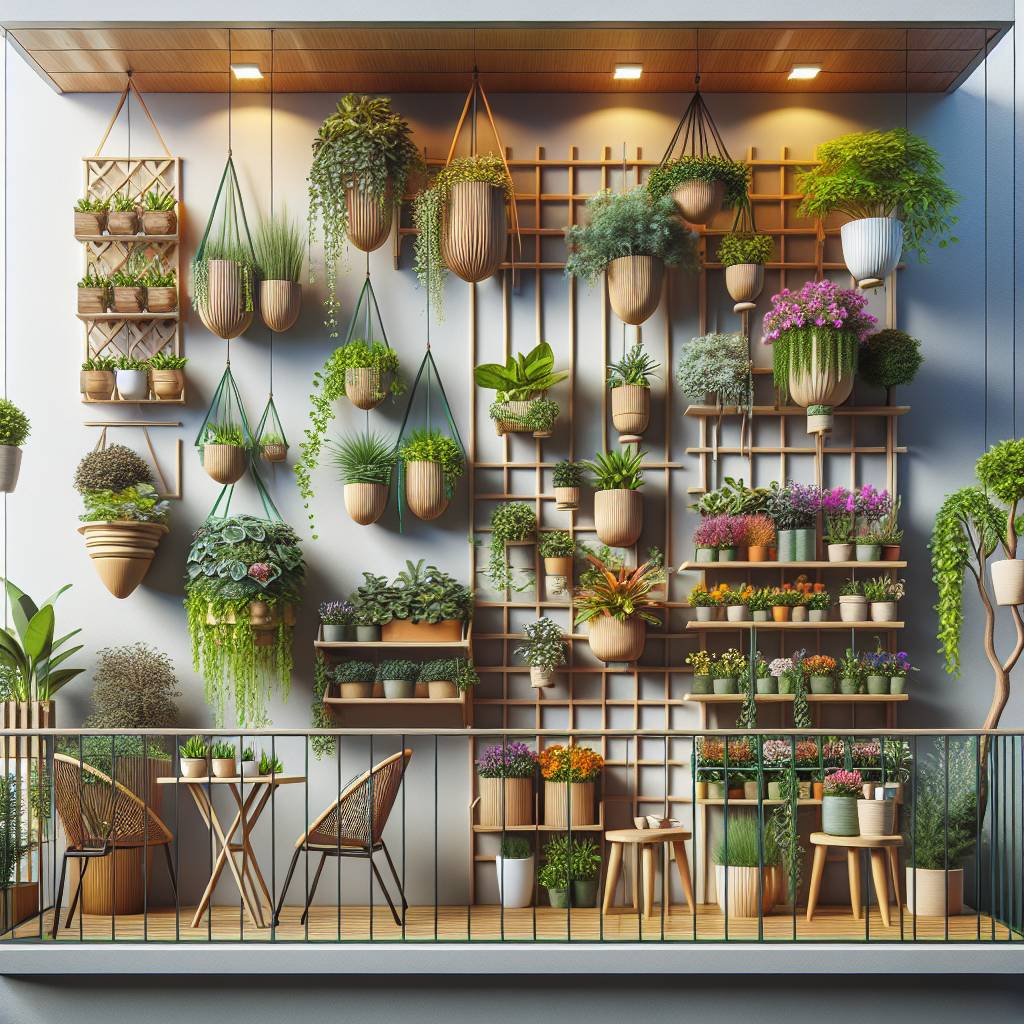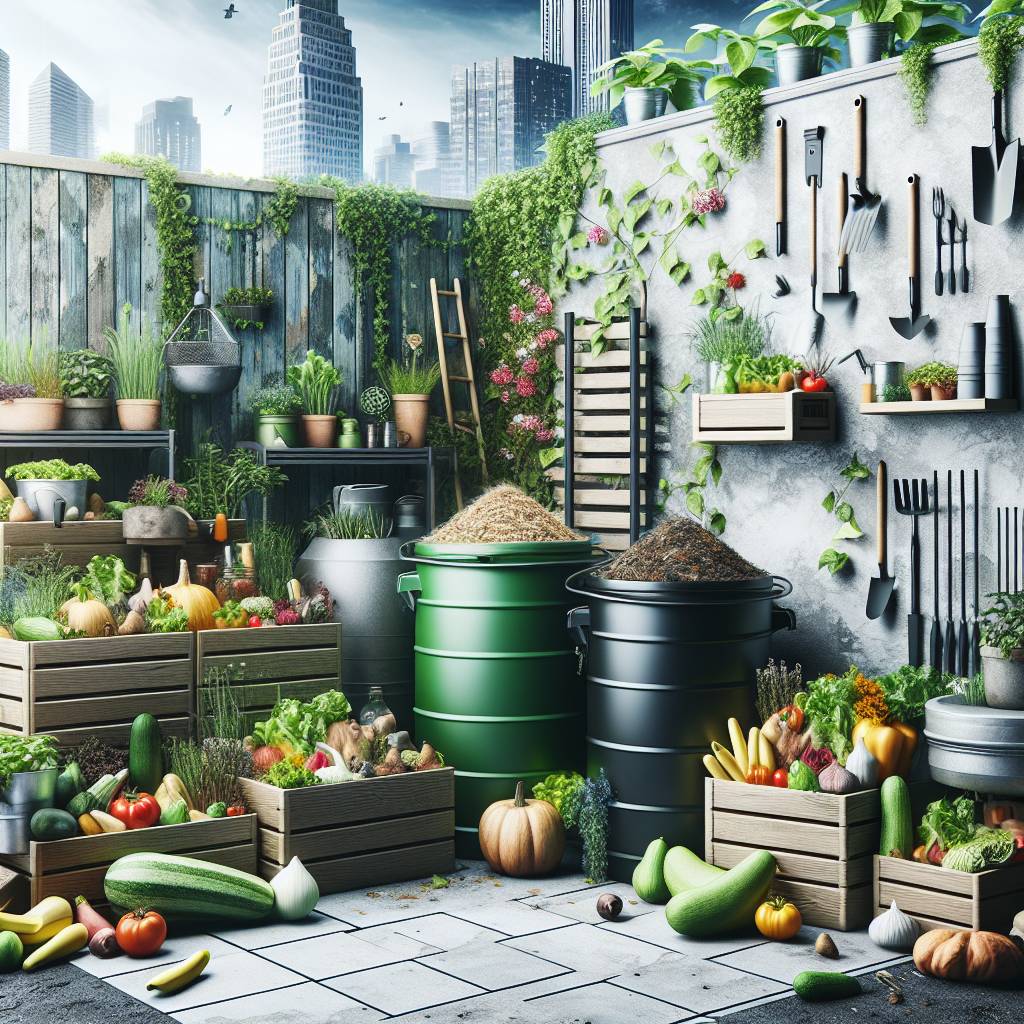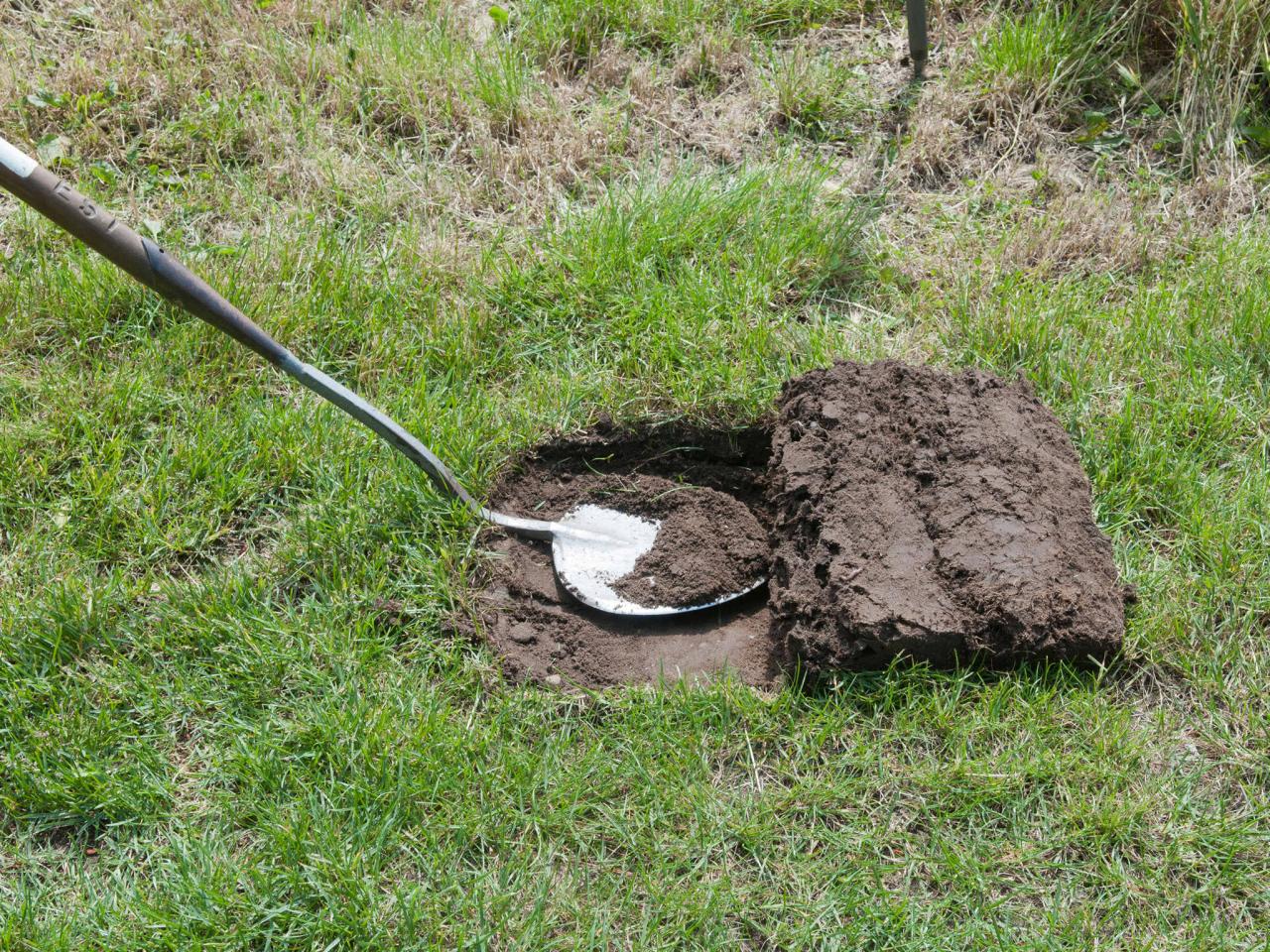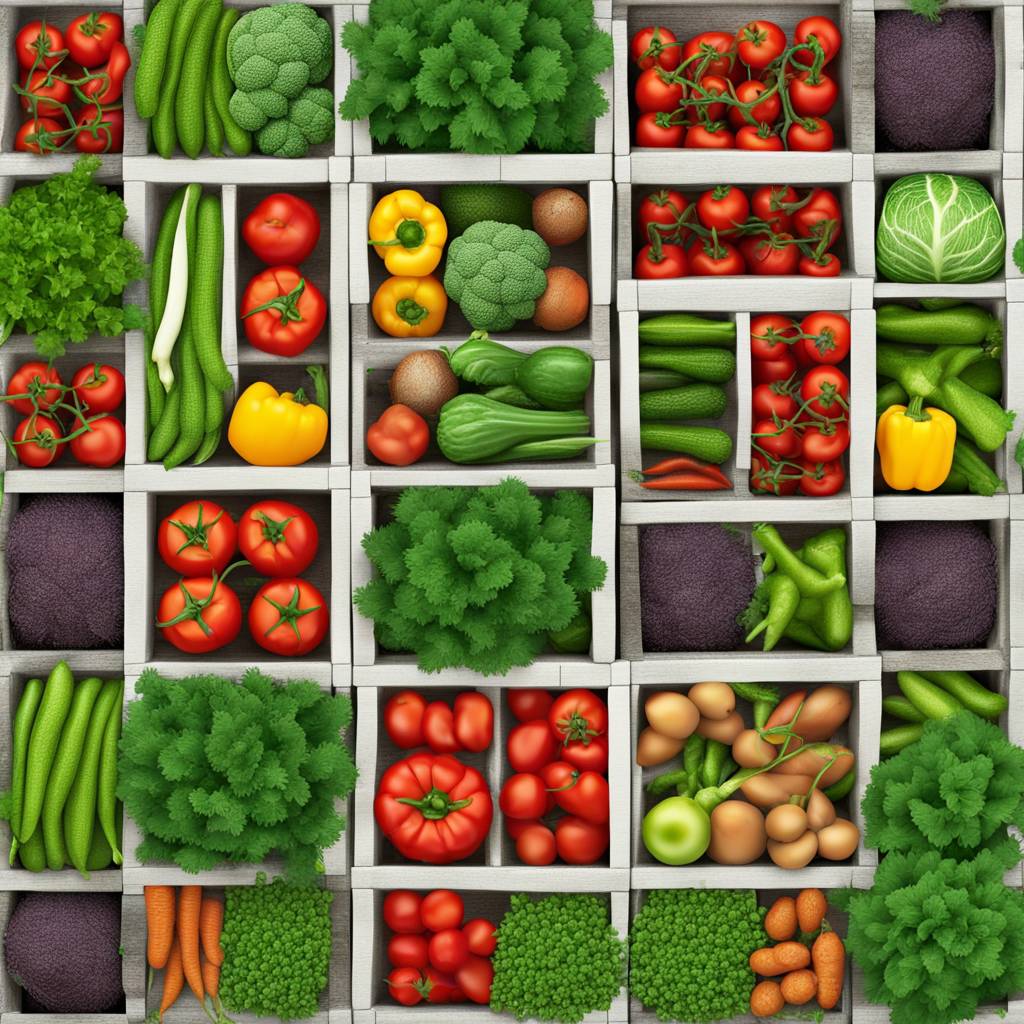Want to transform your balcony into a green oasis without sacrificing space? In urban areas, outdoor space is often limited, but that doesn’t mean you can’t enjoy the benefits of gardening. With some creative thinking and smart solutions, you can turn even the smallest balcony into a flourishing garden paradise. This blog post will guide you through innovative space-saving ideas tailored specifically for balcony gardens, helping you maximize every inch of your outdoor area.
From vertical planters to hanging baskets and compact furniture with built-in planters, railings, small tabletop spots, and photo, we’ll explore practical and stylish ways to make the most of your balcony space. Whether you’re a seasoned gardener or just starting out, these tips will inspire you to create a beautiful and functional outdoor retreat right at home.
Key Takeaways
- Understand the restrictions of your balcony space to make informed decisions about plant selection and container choices.
- Choose plants that are suitable for balcony gardens, considering sunlight, wind exposure, and space limitations.
- Select containers that maximize space efficiency, such as hanging baskets, railing planters, and tiered stands.
- Utilize vertical space with ladders and living walls to expand planting area without sacrificing floor space.
- Incorporate space-saving furniture and planters to create a functional and inviting outdoor oasis.
- Embrace simplicity and texture in balcony design to achieve a visually appealing and harmonious outdoor space.
Understanding Balcony Garden Restrictions
Local Building Codes
Before implementing space-saving ideas for balcony gardens, look at local building codes and railing spots. These regulations often dictate what is and isn’t allowed in terms of balcony modifications, including the installation of garden structures or planters. Some areas may have specific rules about the types of materials that can be used on balconies or restrictions on altering the exterior appearance of buildings.
It’s essential to research these regulations because non-compliance could result in fines or other penalties. For example, some apartment complexes may prohibit certain activities on small balconies due to safety concerns or aesthetic reasons.
Weight Limitations
Another important consideration when planning a balcony garden is understanding the weight limitations and railing for your space. Balconies are designed to support a specific amount of weight, and exceeding this limit can lead to structural damage and safety hazards.
For instance, if you plan to incorporate heavy planters or large furniture pieces into your balcony garden design, it’s vital to ensure that the structure and railing can safely bear this additional load. Failure to do so could compromise the integrity of your balcony and pose risks not only for yourself but also for others living in your building.
Researching any regulations regarding hanging plants or structures on a small balcony is also critical as some buildings may have restrictions due to safety concerns.
Selecting Suitable Plants for Balcony Gardens
Climate and Sunlight Conditions
Selecting suitable plants is crucial. Start by considering the climate and sunlight conditions specific to your location. Choose plants that thrive in your area’s climate, whether it’s hot and sunny or cool and shaded. For example, if you live in a region with limited sunlight on your small balcony, opt for shade-loving plants like ferns or begonias. Conversely, if your balcony receives ample sunlight, consider sun-loving varieties such as petunias or marigolds.
It’s essential to understand the amount of direct sunlight your balcony receives throughout the day. This information will help you determine which types of plants are best suited for your small balcony. By selecting plants that align with your climate and sunlight conditions, you can ensure they thrive and flourish on your balcony.
Size and Growth Habits
Another vital consideration when choosing plants for balcony gardens is their size and growth habits. Since small balconies typically have limited space, it’s important to select plants that won’t overcrowd the area as they grow. Look for compact varieties or those that can be easily maintained at a smaller size through pruning.
For instance, herbs like basil or thyme are excellent choices due to their compact nature and ability to thrive in small containers. Trailing or cascading plants such as ivy or trailing petunias can add visual interest without taking up valuable floor space on the balcony.
Opting for low-maintenance plant species is also beneficial when dealing with restricted garden spaces. Consider incorporating succulents like echeveria or sedum into your balcony garden design—they require minimal care while adding greenery to the environment.
Choosing the Best Containers for Space Efficiency
Use Hanging Baskets
Hanging baskets are an excellent choice for space-saving ideas for balcony gardens. By utilizing vertical space, you can free up valuable floor area while still enjoying a variety of plants. These containers can be hung from railings or hooks, allowing you to grow flowers, herbs, or even small vegetables without taking up any ground space.
For example, you could plant trailing petunias or cherry tomatoes in hanging baskets to create a lush and vibrant display on your balcony. This not only adds visual interest but also maximizes the use of limited space.
Select Compact Containers
Opt for compact options that fit well within the available space. Look for shallow pots and window boxes that won’t encroach too much on your outdoor living area. Consider using stackable planters or tiered stands to make the most of every inch of your balcony.
For instance, compact succulents like echeverias and sedums thrive in small pots and can be arranged neatly on shelves or narrow ledges. This way, you can enjoy a diverse collection of plants without overcrowding your balcony.
Consider Self-Watering Containers
Another smart choice is to invest in self-watering containers when planning space-saving ideas for balcony gardens. These innovative planters come with built-in reservoirs that supply water to the soil as needed, reducing the frequency of manual watering. As a result, they are ideal for busy individuals who want low-maintenance gardening solutions.
For instance, self-watering containers are perfect for growing herbs such as basil and mint since these plants require consistent moisture levels without being waterlogged.
Utilizing Vertical Space with Ladders and Living Walls
Ladder Shelf Systems
Ladder shelf systems are a fantastic way to maximize space-saving ideas for balcony gardens. These shelves can be leaned against the wall, providing multiple tiers for displaying an array of plants. By utilizing ladder shelf systems, you can effectively transform a plain wall into a lush green space, adding vibrancy and life to your balcony. The beauty of these shelves is that they don’t take up much floor space but still offer ample room for various planters. You can arrange different types of plants on each level based on their light requirements or simply create an aesthetically pleasing display.
Another advantage of using ladder shelf systems is the flexibility they offer in terms of design and arrangement. You have the freedom to adjust the height between shelves according to your plant sizes and preferences. This adaptability ensures that no vertical space goes unused while maintaining an organized and visually appealing garden area.
Living Walls with Modular Planters
Living walls, also known as vertical gardens, present an innovative approach to space-saving ideas for balcony gardens. They involve arranging modular planters or trellises on a wall surface to create a stunning vertical garden display. These living walls not only save valuable floor space but also provide excellent opportunities for growing a variety of plants in a compact area.
Modular planters allow you to customize the layout by adjusting planter heights based on your specific needs and preferences. This feature enables you to accommodate different types of plants that require varying levels of sunlight or shade without compromising aesthetics or functionality.
Trellises are another great option for creating living walls in small spaces like balconies. By attaching them securely onto walls, you can support climbing plants such as ivy or jasmine while freeing up precious floor space below.
Hanging Planters from Railings
Hanging planters from railings is an effective strategy for maximizing limited outdoor space while beautifying your balcony garden at varying heights levels simultaneously. Whether it’s rail-mounted pots or hanging baskets suspended from hooks attached to railings, this method allows you to make use of underutilized vertical areas around your balcony perimeter.
Incorporating Space-Saving Furniture and Planters
Foldable Furniture for Easy Storage
Investing in foldable furniture is a game-changer. Imagine having the flexibility of enjoying a cozy breakfast on your balcony with a small table and chairs, which can then be neatly folded away when not in use. This allows you to maximize your space for other activities or simply to create more room. By utilizing this type of furniture, you can easily transform your balcony from an outdoor dining area into an open space where you can practice yoga or enjoy some quiet time.
Another great idea is to choose multi-functional pieces like benches with built-in planters. This clever design not only provides seating but also incorporates greenery into the furniture itself, creating a seamless blend of comfort and nature within a limited space.
Hanging or Wall-Mounted Planters
Opting for hanging or wall-mounted planters is an excellent way to save floor space while adding lush foliage to your balcony garden. These planters come in various designs and sizes, allowing you to mix and match different styles based on your preferences. By suspending these planters from the ceiling or attaching them to the walls, you free up valuable floor space while still being able to enjoy vibrant greenery outside.
Incorporating trellises as part of your vertical garden design presents many ways for plants such as vines, flowers, and herbs to grow upwards rather than outwards. This strategy maximizes growing potential without occupying precious square footage on the ground.
Designing a Mini Culinary Garden on Your Balcony
Choosing the Right Plants
When creating a space-saving culinary garden on your small balcony, it’s essential to select the right plants. Opt for herbs like basil, mint, and rosemary that thrive in small pots or vertical planters. These compact plants not only add flavor to your dishes but also serve as beautiful green decorations for your balcony.
Consider growing compact vegetable varieties such as cherry tomatoes or salad greens. These vegetables are perfect for balconies with limited space and can be grown in small containers or hanging baskets. By choosing these smaller plant varieties, you can maximize the use of your limited balcony space while still enjoying fresh produce.
Creating an Ideal Growing Environment
To ensure the success of your mini balcony garden, it’s crucial to create an ideal growing environment for your plants. Designate a specific area on your balcony solely dedicated to growing edible plants. This designated area should have proper drainage to prevent waterlogging and root rot.
Ensure that each plant has enough room to grow by using appropriately sized pots or planters. Consider installing a drip irrigation system or self-watering containers to simplify the watering process and keep your plants healthy even during hot summer days.
Embracing Simplicity and Texture in Balcony Design
Clean and Uncluttered Space
Create a visually spacious feel on your balcony by keeping the overall design clean and uncluttered. Maximize balcony space by avoiding overcrowding with too many plants or furniture. A clutter-free environment not only makes the area look bigger but also provides a tranquil retreat within your home.
When arranging your balcony, consider using minimalistic furniture to avoid overwhelming the limited space. Opt for sleek, streamlined pieces that serve their purpose without dominating the area. By doing so, you can maintain an open and airy atmosphere while still having functional seating or tables.
Incorporating storage solutions such as wall-mounted shelves or hanging planters can help keep items off the floor, further contributing to a neat and spacious appearance.
Adding Texture Through Plant Variety
Enhance the visual appeal of your balcony garden by incorporating various plant shapes, sizes, and foliage colors to add texture. Mix different types of plants like trailing vines, compact bushes, tall grasses, or flowering varieties to create depth and dimension in your outdoor oasis.
For example:
- Hang cascading ivy from balcony railings.
- Place potted succulents of varying heights on different levels.
- Integrate ornamental grasses for added visual interest.
By combining these diverse elements together in one setting, you can achieve an eye-catching display that adds vibrancy to your outdoor space while maximizing its potential.
Natural Materials for Warm Ambiance
To infuse warmth into your balcony design, incorporate natural materials such as wood or rattan. Utilize these materials for furniture pieces like chairs or tables to evoke a cozy ambiance reminiscent of nature’s embrace right at home on your balcony.
Consider adding wooden planter boxes filled with lush greenery to introduce an earthy touch while connecting with nature in this urban setting. These natural accents not only contribute to a warm aesthetic but also complement the organic beauty of plants thriving in this small yet inviting space.
Enhancing Ambiance with Lighting and Cozy Accents
Creating a Cozy Atmosphere
Creating a cozy ambiance is essential. One effective way to achieve this is by installing string lights or lanterns, which can instantly transform the atmosphere in the evenings. These lights not only provide a warm and inviting glow but also add a touch of elegance to your outdoor space. By utilizing these lighting options, you can make your balcony garden feel cozier and more welcoming, allowing you to enjoy the serene atmosphere even after dark.
Using candles or flameless LED candles can further enhance the cozy ambiance on your balcony. The soft and relaxing glow from these light sources adds an extra layer of warmth to the space, making it an ideal spot for unwinding after a long day. With the gentle flicker of candlelight illuminating your balcony garden, you can create a tranquil environment that promotes relaxation and comfort.
Adding Comfortable Accents
To elevate the comfort level of your balcony garden, consider adding various cozy accents such as cushions, throws, and outdoor rugs. The addition of plush cushions provides comfortable seating options while also infusing vibrant colors into the space. Opting for weather-resistant materials ensures that these elements withstand exposure to wind and direct sunlight without compromising their charm.
Moreover, incorporating outdoor throws allows you to introduce additional layers of coziness while providing warmth during chilly evenings outdoors. Outdoor rugs not only contribute to creating an inviting look but also define specific areas within your balcony garden for different activities such as dining or lounging.
Smart Storage and Modular Seating Solutions
Utilize Storage
Utilizing storage benches or ottomans can be a game-changer. These multifunctional pieces of furniture not only provide seating but also offer hidden compartments to keep gardening tools, supplies, and even small pots neatly tucked away. By incorporating these storage solutions into your balcony garden, you can maintain a clutter-free space while having easy access to essential items.
Consider adding shelving units that double as planters, allowing you to display your greenery while optimizing vertical space. This not only adds visual interest but also serves as an efficient way to store plants without occupying precious floor area. Investing in stackable containers or crates can help maximize the available space by creating layered storage for various gardening essentials.
Modular Seating Options
In addition to smart storage solutions, consider opting for modular seating options when furnishing your balcony garden. These versatile pieces of furniture can be rearranged based on your specific needs at any given time. For instance, modular sofas with interchangeable components enable you to customize the layout according to social gatherings or simply create more room for planters and other garden features when needed.
By choosing adaptable seating arrangements such as ottomans or poufs that serve both as extra seating and footrests, you can effortlessly transform your balcony into a functional yet cozy outdoor oasis without compromising on comfort or style. Moreover, foldable chairs and tables are excellent choices for balconies with limited space since they can be easily stored away when not in use.
Hanging Hooks and Racks
To further optimize the available space in your balcony garden, incorporate hanging hooks or racks specifically designed for gardening tools and accessories. These practical additions allow you to free up valuable floor space while keeping essential items within arm’s reach whenever necessary. Hang lightweight tools such as trowels, pruners, watering cans, and gloves on sturdy hooks attached to walls or railings.
Moreover, consider installing wall-mounted racks designed for holding potted plants vertically. This innovative approach not only creates an eye-catching display but also frees up horizontal surfaces for additional seating or decorative elements like lanterns or sculptures.
Closing Thoughts
You’ve now unlocked the secrets to creating a flourishing oasis on your balcony, despite space limitations. By understanding your balcony’s restrictions, selecting the right plants and containers, and embracing innovative space-saving solutions, you can transform your outdoor space into a green sanctuary. Remember, it’s not about the size of your balcony; it’s about how you maximize its potential. So, go ahead and put these ideas into action, and watch your balcony bloom into a cozy retreat that defies its size.
Now it’s time to roll up your sleeves and get started on your balcony garden transformation. Embrace the challenge and let your creativity flow. Your small balcony has big potential – seize it! Happy gardening!
Frequently Asked Questions
Can I grow vegetables on my balcony garden?
Absolutely! Many vegetables can thrive in containers, such as tomatoes, peppers, and herbs. Just ensure they receive adequate sunlight and water.
How can I maximize space for a small balcony garden?
Consider vertical gardening with hanging planters or trellises. Utilize multi-level shelving units to create more planting space while keeping the floor area free.
What are some low-maintenance plants suitable for balcony gardens?
Succulents like aloe vera and jade plants are excellent choices. They require minimal care and add a touch of greenery to your balcony without much effort.
Is it possible to create privacy on a small balcony?
Certainly! You can use tall plants, bamboo screens, or decorative lattice panels to create a private oasis right on your balcony.
How do I protect my balcony garden from strong winds?
Strategically place windbreaks like mesh screens or solid barriers around the perimeter of your balcony. Selecting sturdy containers will help prevent toppling during windy conditions.






